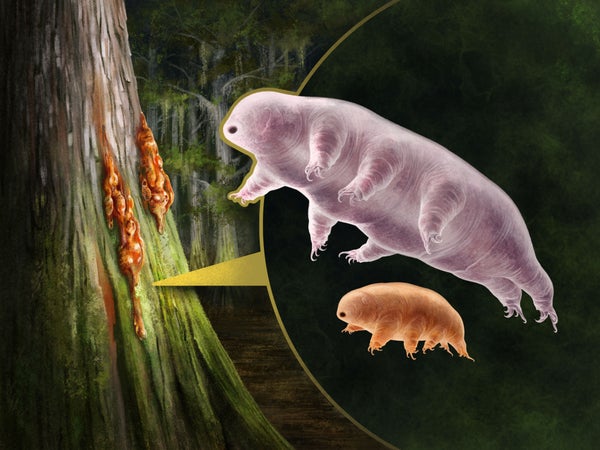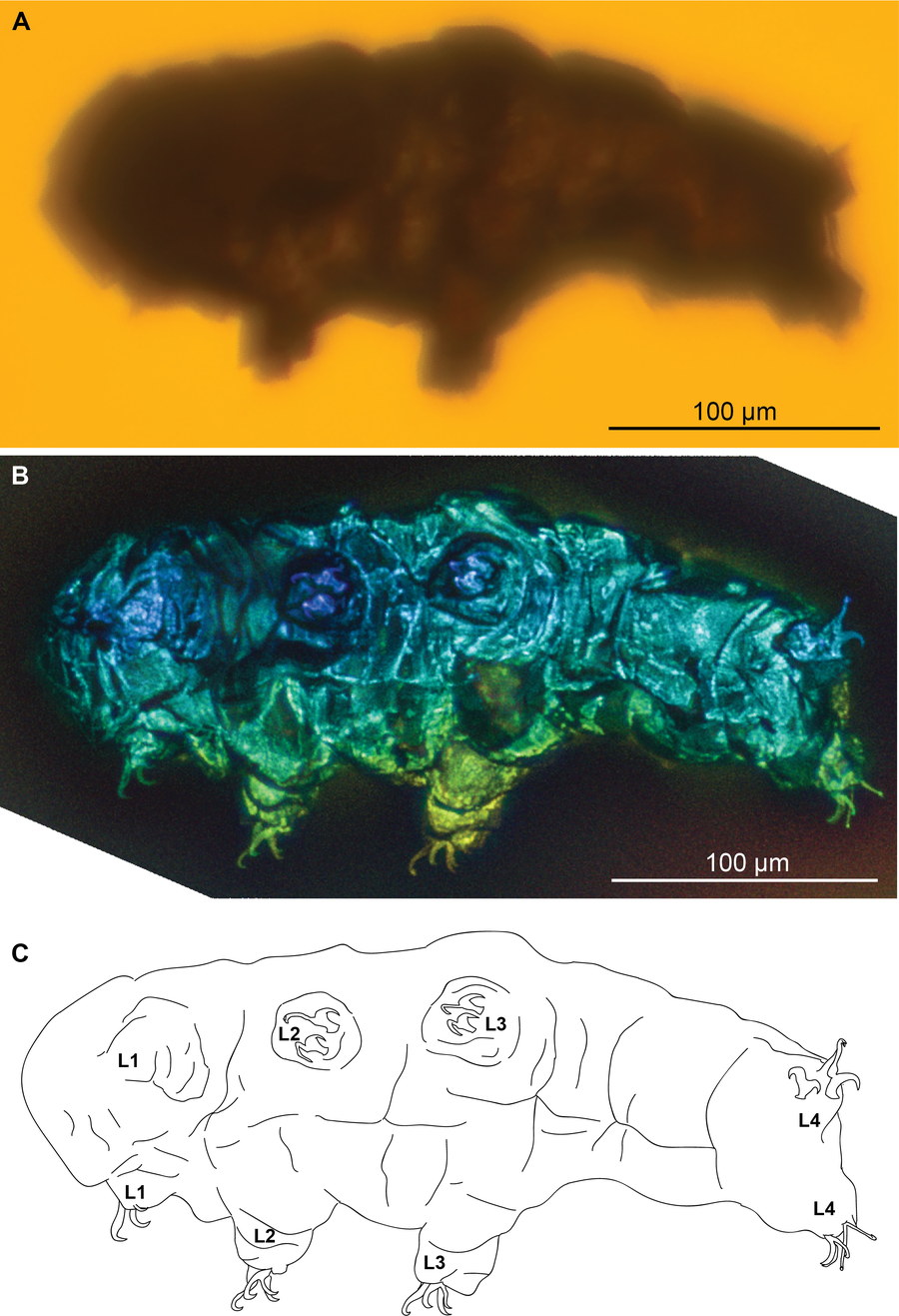August 15, 2024
2 min read
Tardigrade Fossils Reveal When ‘Water Bears’ Became Indestructible
252 million years ago, tardigrades may have escaped extinction using this one weird trick

An artistic reconstruction of two tardigrade fossil specimens that were preserved in amber and analyzed in a recent study.
“Cretaceous Amber Inclusions Illuminate the Evolutionary Origin of Tardigrades,” by M.A. Mapalo et al., in Communications Biology, Vol. 7, No. 953. Published online August 6, 2024
Microscopic tardigrades—plump, eight-legged arthropod relatives—are nearly indestructible, and that superpower may have helped them weather the deadliest mass extinction in Earth’s history, according to a new analysis of tardigrade fossils in amber. The study is the first to estimate when this ability evolved.
Tardigrades, also called water bears, can withstand extreme heat, cold, pressure and radiation. They survive hostile environments through a process called cryptobiosis, in which they expel most of the water in their body and enter a suspended metabolic state. Two major tardigrade lines possess this ability.
There are only four known tardigrade fossils. All are preserved in amber, including two inside an amber pebble that was found in Canada in the 1940s and dates from 84 million to 71 million years ago. One of the pebble’s tardigrades, representing a species named Beorn leggi, was described in 1963. The other was too small to be identified at the time, says Marc Mapalo, a graduate student at Harvard University’s Museum of Comparative Zoology.
On supporting science journalism
If you’re enjoying this article, consider supporting our award-winning journalism by subscribing. By purchasing a subscription you are helping to ensure the future of impactful stories about the discoveries and ideas shaping our world today.

The tardigrade Beorn leggi, photographed with transmitted light under a compound microscope (A), photographed with autofluorescence under a confocal microscope (B) and represented as a schematic drawing (C).
From “Cretaceous Amber Inclusions Illuminate the Evolutionary Origin of Tardigrades,” by Marc A. Mapalo et al., in Communications Biology, Vol. 7, Article No. 953. Published online August 6, 2024
For a new study in Nature Communications Biology, Mapalo and his colleagues used high-contrast microscopy to uncover previously unseen details in both specimens’ claws, “which are very important taxonomic characteristics in tardigrades,” Mapalo says. Tardigrade body plans have varied little for millions of years, so the scientists’ new images of the claw shapes offered crucial information about where these amber-trapped fossils belonged, says University of Chicago organismal biologist Jasmine Nirody, who was not involved in the research.
The authors determined the smaller tardigrade was a new genus and species: Aerobius dactylus. They also revised B. leggi’s description and classification based on joints in its claws. Both species were placed in the same tardigrade superfamily Hypsibioidea, and B. leggi was formally moved into the family Hypsibiidae. This rearrangement placed the smaller tardigrade in the same major line (the class Eutardigrada) as the larger one, whereas researchers had previously thought the latter was in the other line.
The resulting recalibration of the tardigrade family tree let the researchers calculate when the two lines diverged—putting a latest date on the likely acquisition of cryptobiosis. Their work suggests cryptobiosis appeared in tardigrades during the Carboniferous period (359 million to 299 million years ago), predating a deadly event known as the Permian extinction, or the “Great Dying,” which occurred about 252 million years ago. The authors suggest that cryptobiosis may have helped tardigrades survive the event, which wiped out 96 percent of marine life and 70 percent of life on land.
The evolution of cryptobiosis is challenging to study in part because tardigrade fossils are so scarce, Mapalo says. Additional fossil discoveries will help scientists pin down details about the appearance of this unique survival strategy. “Hopefully, by sharing this result, we will entice other people to be aware that fossil tardigrades exist and there are still more to be found,” he says.









